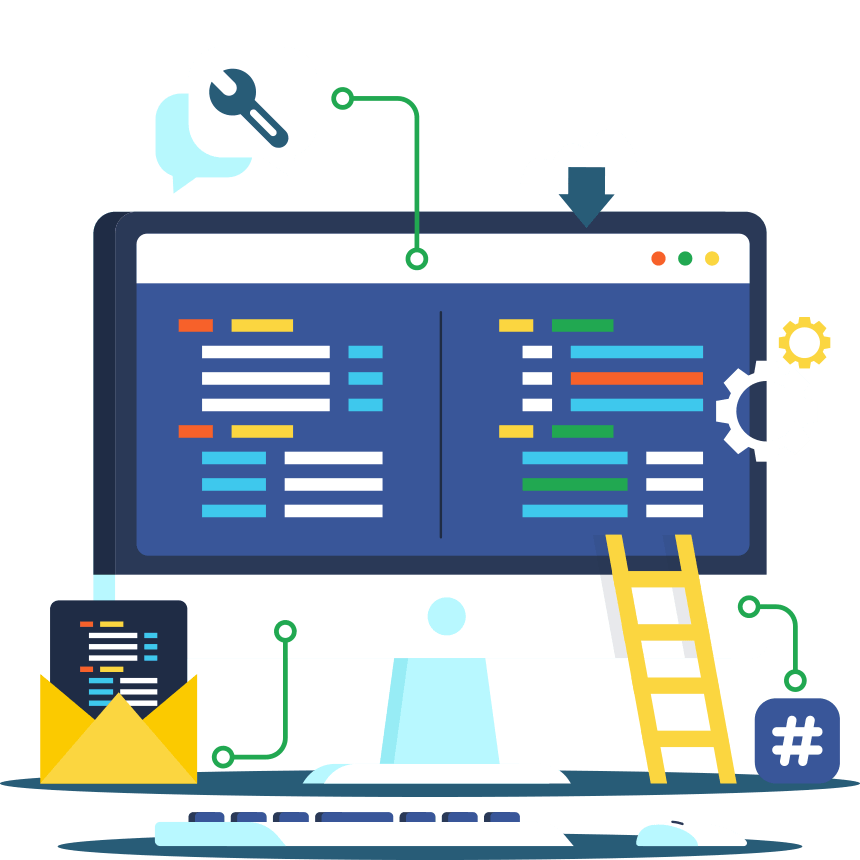
Testing the software work at HyyatHost
We talked previously about preparing ideas for website design. To complete the explanation, we will show how the work is tested after its completion.
What is a work test? #
It is one of the most important things that must be done after completing the programming and design of a website or application
Web testing, or website testing is the checking of your web application or website for possible errors before it is published on hosting live and accessible to the general public. Web testing checks the functionality, usability, security, compatibility, and performance of a web application or website.
During this phase, issues such as the security of the web application, the functioning of the site, its accessibility to normal users and its ability to handle traffic are checked.
How is the website or web application tested? #
In software engineering, the following types/techniques of testing can be done depending on your web testing requirements.
1. Test the functionality of the site #
Website functionality testing is a process that involves various testing benchmarks such as user interface, APIs, database testing, security testing, client and server testing, and core website functionality. Functional testing is very convenient and allows users to perform both manual and automated testing. It is done to test the functionality of every feature on the site.
Web-based testing activities include:
Test all links in your web pages are working properly and make sure there are no broken links. It will include links to be verified
- Outbound or external links
- Internal links
- Website linked mail
Test your HTML and CSS to make sure your site can be easily crawled by search engines. This will include
- Check for syntax errors
- Readable color schemes
- Standard compliance. Make sure you follow standards like W3C, OASIS, IETF, ISO, ECMA, or WS-I.
2. Usability Test: #
Usability testing is now a vital part of any web based project. It can be done by testers like you or a similar small focus group for the target audience of your web application or website.
Test site navigation:
Menus, buttons, or links to different pages on your site must be easily visible and consistent across all web pages
Test the content:
Content should be legible without spelling or grammatical errors.
Images, if any, must contain “alt” text.
3. Testing Website Applications: #
There are three areas that need to be tested here – the application, the website and the contact me database server
Application: Test requests are correctly sent to the database and client-side output is displayed correctly. Troubleshooting the application, if any, must be shown only to the administrator and not to the end user.
Website: The web server must handle all application requests without denying any service.
Database Server: Queries sent to the database are scanned and produce expected results.
Test the system’s response when a connection between the three layers (application, web, and database) cannot be established and the appropriate message appears to the end user.
4. Testing the database: #
A database is an important component of your web application and effort should be made to test it thoroughly. Test activities will include:
- Test whether any errors are displayed while executing the queries
- Data integrity is maintained while creating, updating or deleting data in the database.
- Check response time to inquiries and adjust if necessary.
- Reference test data from your database accurately appears in your web application
5. Compatibility testing. #
Compatibility tests ensure that your website or web application displays correctly across different devices. This may include:
Browser compatibility test: The same website will display differently in different browsers. You need to test whether or not your web application renders correctly across browsers, and make sure JavaScript, AJAX, and authentication work fine. You can also check mobile browser compatibility.
The display of web elements such as buttons, text fields, etc. changes with the change in the operating system. Ensure that your website works well with a variety of operating systems such as Windows, Linux, Mac, and browsers such as Firefox, Internet Explorer, Safari, etc.
6. Performance Test: #
This will ensure that your site is running under all loads. Software testing activities will include but not be limited to:
- Website application response times at different connection speeds
- Test your web application to determine its behavior under normal and peak loads
- Stress test your website to determine its breaking point when it is pushed beyond normal loads at peak time.
- Test if a crash occurs due to a peak load, how the site recovers from such an event
- Make sure to enable optimization technologies such as gzip compression, browser and server-side cache to reduce load times
7. Safety Test: #
Security testing is vital for an e-commerce site that stores sensitive customer information such as credit cards. Testing activities will include:
- Unauthorized access to secure pages should not be allowed to test
- Restricted files should not be downloadable without proper access
- Scan sessions are automatically terminated after a long period of user inactivity
- When using SSL certificates, the website should be redirected to SSL encrypted pages.
8. Crowd Test: #
You will select a large number of people (audiences) to perform the tests that would otherwise be implemented by a select group of people in the company. Group testing is an interesting and upcoming concept that helps uncover many unnoticed flaws.
The explanation of the software work test at HyyatHost has been completed




